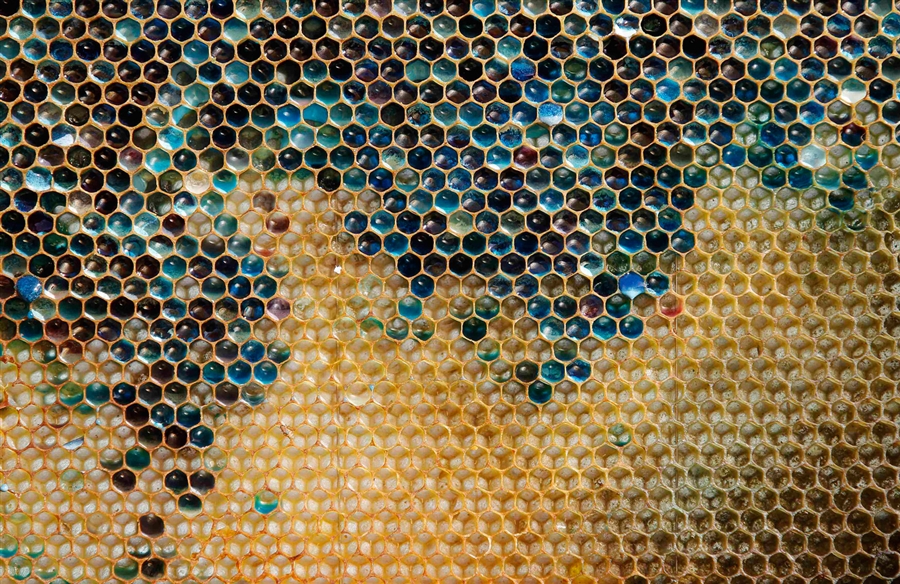Blame the M&M sludge being turned into biofuel nearby
Beekeepers in France faced a bizarre sight recently: in places, their bees had created beautiful blue honey. The blues ranged from brilliant turquoise to a darker royal blue. All of the shades contrasted very nicely with the normal colored honey surrounding them. It seemed quite artistic, but no less disturbing for being so visually attractive. Other beekeepers found brilliant green honey when they cracked open their hives.
Beekeepers throughout the area of Alsace centering around the town of Ribeauville collaborated on investigating this mystery. Soon they discovered the culprit: a nearby biogas plant which had been processing industrial waste from a Mars plant which had been making M&Ms in the traditional brilliant shades of blue and green, as well as red, brown, and yellow.
When bees discover a nearby source of nectar, they are famously indifferent to its source. Whether it comes from the flowers of an almond tree, blackberry bushes, or a giant industrial vat of spoiled candy: to a bee, it is all just calories to be stored away for the winter (in the form of honey). And of course, when one bee finds a good source, she returns to the hive and tells all of her sisters exactly how to get there, communicating specific flying directions with the "waggle dance."
Soon, the entire hive is industriously zipping back and forth between the chemical plant and their hive. And the next thing you know, you have an entire comb of prettily colored but unsalable honey. Although it's pretty, and people would probably be willing to buy it as a novelty, because it stems from non-food grade industrial waste it cannot be sold. Furthermore, many have found that this kind of tainted honey tastes very bad.
A similar problem happened in New York City recently, with bees creating brilliant red honey from a nearby candy factory. Although in this case, the honey came from food grade vats and could theoretically be sold, the beekeepers found that it tasted bitter and metallic, with strong chemical overtones.
No surprise, perhaps, to honey connoisseurs. There is a distinct taste difference between honey made from clover flowers versus honey made from blackberry flowers (and all the other forms of honey available). It makes sense that honey from a chemical factory, no matter how pretty, would taste pretty badly of chemicals.
Worse still, the honey is probably not good for the bees, given its chemical composition. Bees make honey to tide them through the winter, but the beekeepers will have to discard this colored honey and feed their bees an artificial blend of sugar water instead. Meaning that the bees' summer labors were all in vain.
